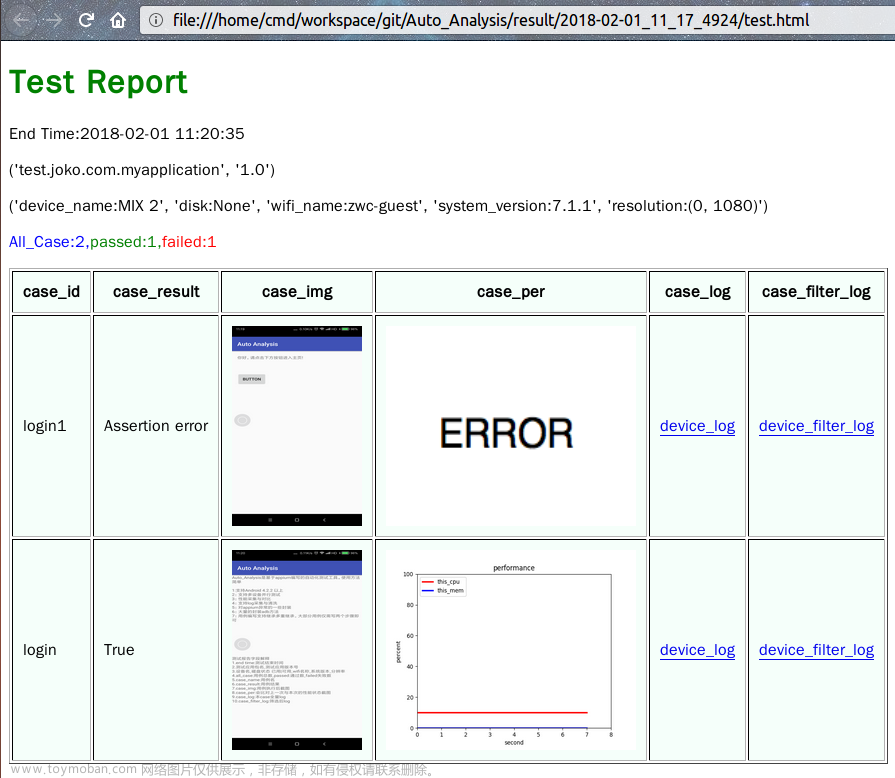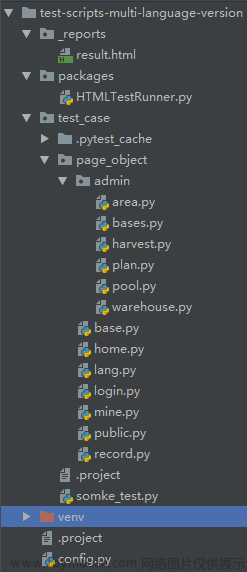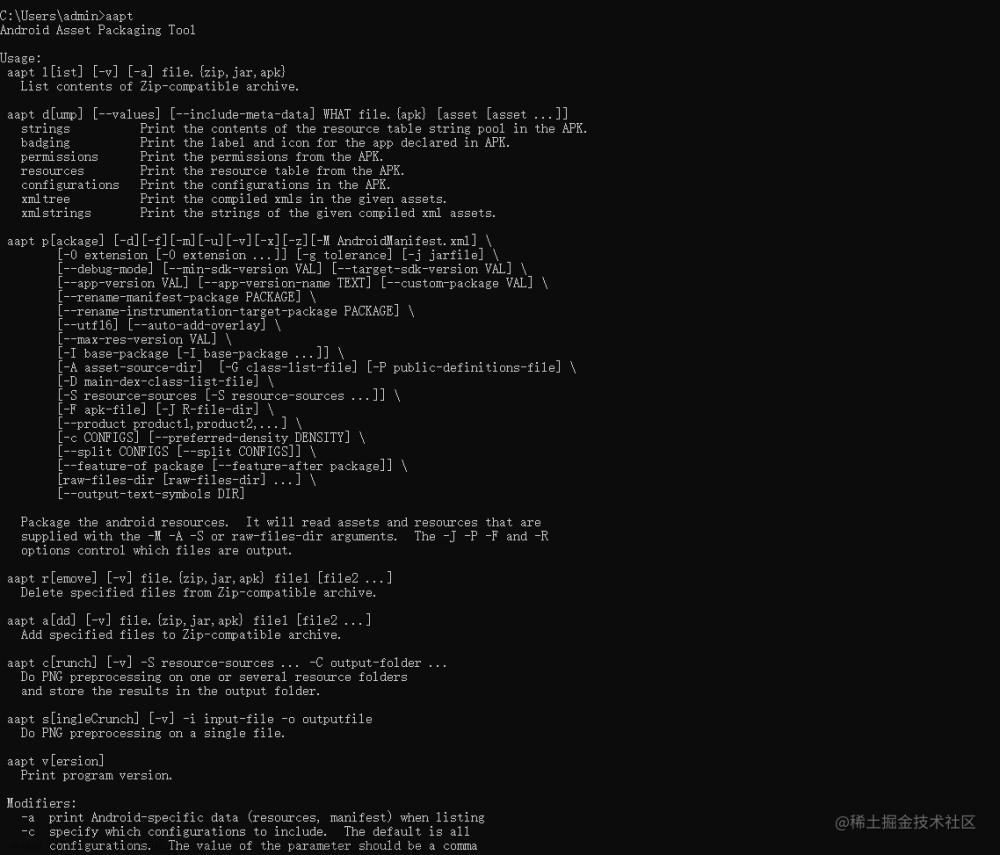一、环境搭建及准备工作
1、Appium 2 环境搭建
- 请参考另一篇文章: Windows系统搭建Appium 2 和 Appium Inspector 环境
2、安装 Appium-Python-Client,版本要求3.0及以上 和 Selenium 版本要求4.0及以上
pip install Appium-Python-Client
Version: 3.1.0
pip install selenium
Version: 4.15.2
3、手机连接电脑,并在dos窗口启动 Appium Server
4、演示环境APP软件:ES文件浏览器、随手记
5、查看元素唯一方法
- 复制id,点击搜索图标

- 选择id,粘贴内容,点击Search,查看


二、编写自动化脚本
from appium import webdriver
from appium.options.common.base import AppiumOptions
from appium.webdriver.common.appiumby import AppiumBy
def create_driver():
"""
AppiumOptions():
用于配置 Appium 测试的通用选项,可用于 Android 和 iOS 平台
可以设置通用的测试选项,如平台名称、版本、自动化引擎等
"""
# 创建 AppiumOptions 对象
options = AppiumOptions()
# 加载测试的配置选项和参数(Capabilities配置)
options.load_capabilities({
# 自动化测试的引擎
"automationName": "uiautomator2",
# 平台名称
"platformName": "Android",
# 系统版本
"platformVersion": "11",
# 设备的名称
"deviceName": "RK3399",
# 待测试应用的包名
"appPackage": "com.estrongs.android.pop",
# 待测试应用的活动(Activity)名称
"appActivity": ".app.openscreenad.NewSplashActivity",
# 设置使用 Unicode 编码方式发送字符串到设备的键盘
"unicodeKeyboard": "true",
# 设置重置设备的软键盘状态并隐藏键盘
"restKeyboard": "true"
})
# Appium服务器地址端口,本地用http://127.0.0.1:4723
appium_host = 'http://192.168.100.15:4723'
return webdriver.Remote(appium_host, options=options)
def close_driver(driver):
"""关闭驱动"""
if driver:
driver.quit()
if __name__ == "__main__":
driver = create_driver()
# 设置隐式等待时间为10秒
driver.implicitly_wait(10)
# 元素定位代码...
# 关闭驱动
close_driver(driver)
三、元素定位方式
1、根据id定位
# ID 定位方法
el = driver.find_element(AppiumBy.ID, "com.estrongs.android.pop:id/txt_grant")
el.click()

2、根据xpath定位
# xpath 方法
el1 = driver.find_element(AppiumBy.XPATH, '//android.widget.TextView[@resource-id="android:id/title" and @text="密码设置"]')
el1.click()
# xpath 简写方法
el2 = driver.find_element(AppiumBy.XPATH, '//*[@text="密码设置"]')
el2.click()

3、根据class定位 (建议少用,重复名称较多)
# 使用class name定位
el3 = driver.find_element(AppiumBy.CLASS_NAME, "android.widget.ImageButton")
el3.click()

4、根据Accessibility ID定位
# 使用Accessibility ID定位
el4 = driver.find_element(AppiumBy.ACCESSIBILITY_ID, '转到上一层级')
el4.click()

5、根据UIAutomator定位
- UIAutomator元素定位是 Android 系统原生支持的定位方式,虽然与 xpath 类似,但比它更加好用,且支持元素全部属性定位.定位原理是通过android 自带的android uiautomator的类库去查找元素。 Appium元素定位方法其实也是基于Uiautomator来进行封装的。
# 使用UIAutomator定位元素 (id定位)
el5 = driver.find_element(AppiumBy.ANDROID_UIAUTOMATOR, 'new UiSelector().resourceId("com.estrongs.android.pop:id/txt_grant")')
el5.click()
# 使用UIAutomator定位元素 (test定位)
el6 = driver.find_element(AppiumBy.ANDROID_UIAUTOMATOR, 'new UiSelector().text("搜索")')
el6.click()
# 使用UIAutomator定位元素 (class name定位)
el7 = driver.find_element(AppiumBy.ANDROID_UIAUTOMATOR, 'new UiSelector().className("android.widget.ImageButton")')
el7.click()
6、相同元素定位

如上图,三个输入框的class属性都是一样的,如果要根据class属性分别来获取这三个值,就使用driver.find_elements方式。代码实现如下(注意 driver.find_elements 多个 s):
# 使用class name和索引定位,查找的元素列表中的特定元素
el8 = driver.find_elements(AppiumBy.CLASS_NAME, "android.widget.EditText")
# 输入邮箱
el8[0].send_keys("123456789@qq.com")
# 输入验证码
el8[1].send_keys("654321")
# 输入密码
el8[2].send_keys("123456")
四、点击 - 输入 - 清空操作
# 运行ES文件浏览器软件,并点击同意
el = driver.find_element(AppiumBy.ID, "com.estrongs.android.pop:id/txt_grant")
el.click()
# 单机操作(相当于鼠标点击):click()
el1 = driver.find_element(AppiumBy.XPATH, '//*[@text="搜索"]')
el1.click()
# 输入:send_keys()
el2 = driver.find_element(AppiumBy.CLASS_NAME, "android.widget.EditText")
el2.send_keys("Android自动化")
# 清空: clear()
el3 = driver.find_element(AppiumBy.CLASS_NAME, "android.widget.EditText")
el3.clear()
五、swipe()方法模拟滑动操作
- 滑动操作是模拟用户在应用程序界面上进行手势滑动的操作。在Appium中,可以使用swipe()方法来执行滑动操作。它需要指定起始点和终止点的坐标,并且可以设置滑动的持续时间。滑动操作通常用于测试应用程序界面的可滚动性、页面切换和内容展示等功能。
- swipe(起始横坐标,起始纵坐标,目标横坐标,目标纵坐标,时间)
- 时间:指滑动使用多长时间,单位为毫秒,可为空(去掉duration=****)
简单示例:
# 获取屏幕宽度和高度
width = driver.get_window_size()["width"]
height = driver.get_window_size()["height"]
# 从下向上滑动屏幕
driver.swipe(width*0.5, height*0.9, width*0.5, height*0.1, duration=500)
# 从上向下滑动屏幕
driver.swipe(width*0.5, height*0.1, width*0.5, height*0.9, duration=500)
# 从右向左滑动屏幕
driver.swipe(width*0.9, height*0.5, width*0.1, height*0.5, duration=500)
# 从左向右滑动屏幕
driver.swipe(width*0.1, height*0.5, width*0.9, height*0.5, duration=500)
封装示例:
class ScreenSlider():
def __init__(self, driver):
"""初始化屏幕滑动器"""
self.driver = driver
def get_screen_size(self):
"""获取屏幕尺寸"""
screen_size = self.driver.get_window_size()
return screen_size["width"], screen_size["height"]
def swipe_up(self, duration=500):
"""从下向上滑动屏幕 x轴不变,y轴变动"""
width, height = self.get_screen_size()
self.driver.swipe(width*0.5, height*0.9, width*0.5, height*0.1, duration=duration)
def swipe_down(self, duration=500):
"""从上向下滑动屏幕 x轴不变,y轴变动"""
width, height = self.get_screen_size()
self.driver.swipe(width*0.5, height*0.1, width*0.5, height*0.9, duration=duration)
def swipe_left(self, duration=500):
"""从右向左滑动屏幕 x轴变动,y轴不变"""
width, height = self.get_screen_size()
self.driver.swipe(width*0.9, height*0.5, width*0.1, height*0.5, duration=duration)
def swipe_right(self, duration=500):
"""从左向右滑动屏幕 x轴变动,y轴不变"""
width, height = self.get_screen_size()
self.driver.swipe(width*0.1, height*0.5, width*0.9, height*0.5, duration=duration)
六、连续滑动方法
swipe滑动操作,一般是两点之间的滑动,而实际使用过程中用户可能要进行一些多点连续滑动操作。如手势密码操作,切西瓜等场景。那么在Appium2中该如何模拟这类操作呢?
-
W3C WebDriver actions
Appium2进行了一次重大更新,其中最重要的变化是弃用了MultiAction和TouchAction,并全面采用了W3C WebDriver actions。过去,MultiAction和TouchAction被广泛用于模拟复杂手势和多点触控操作,但现在W3C WebDriver actions成为了首选解决方案。这个决策带来了更统一、标准化的操作方式,同时也提供了更好的跨平台兼容性和稳定性。
方法:
# 导入所需模块,用于执行 W3C actions 操作
from selenium.webdriver.common.action_chains import ActionChains
from selenium.webdriver.common.actions import interaction
from selenium.webdriver.common.actions.action_builder import ActionBuilder
from selenium.webdriver.common.actions.pointer_input import PointerInput
# 创建 ActionChains 对象
actions = ActionChains(driver)
# 将 w3c_actions 属性替换为使用触摸(touch)指针交互的 ActionBuilder 对象
actions.w3c_actions = ActionBuilder(driver, mouse=PointerInput(interaction.POINTER_TOUCH, "touch"))
# 移动到坐标 (start_x, start_y) 的位置
actions.w3c_actions.pointer_action.move_to_location(start_x, start_y)
# 执行指针按下操作(类似按下鼠标左键)
actions.w3c_actions.pointer_action.pointer_down()
# 暂停1秒钟
actions.w3c_actions.pointer_action.pause(1)
# 移动到坐标 (end_x, end_y) 的位置
actions.w3c_actions.pointer_action.move_to_location(end_x, end_y)
# 执行指针释放操作(类似松开鼠标左键)
actions.w3c_actions.pointer_action.release()
# 执行动作
actions.perform()
- 以下用随手记APP操作演示
方法一、在Appium Inspector获取坐标 文章来源:https://www.toymoban.com/news/detail-760204.html
文章来源:https://www.toymoban.com/news/detail-760204.html
方法二、在设备端开发者选项中开启指针位置获取坐标 文章来源地址https://www.toymoban.com/news/detail-760204.html
文章来源地址https://www.toymoban.com/news/detail-760204.html
from appium import webdriver
from appium.options.common.base import AppiumOptions
from appium.webdriver.common.appiumby import AppiumBy
from time import sleep
# For W3C actions
from selenium.webdriver.common.action_chains import ActionChains
from selenium.webdriver.common.actions import interaction
from selenium.webdriver.common.actions.action_builder import ActionBuilder
from selenium.webdriver.common.actions.pointer_input import PointerInput
def create_driver():
"""连接Android手机,并运行随手记APP"""
options = AppiumOptions()
options.load_capabilities({
"automationName": "uiautomator2",
"platformName": "Android",
"platformVersion": "11",
"deviceName": "RK3399",
"appPackage": "com.mymoney",
"appActivity": ".biz.home.HomeActivity",
"unicodeKeyboard": "true",
"restKeyboard": "true"
})
appium_host = 'http://127.0.0.1:4723'
return webdriver.Remote(appium_host, options=options)
def close_driver(driver):
"""关闭驱动"""
if driver:
driver.quit()
if __name__ == "__main__":
driver = create_driver()
# 设置隐式等待时间为10秒
driver.implicitly_wait(10)
actions = ActionChains(driver)
actions.w3c_actions = ActionBuilder(
driver, mouse=PointerInput(interaction.POINTER_TOUCH, "touch"))
# 定位到"我的",点击
driver.find_element(AppiumBy.ID, "com.mymoney:id/ll_user").click()
# 从下往上滑动页面
actions.w3c_actions.pointer_action.move_to_location(950, 792)
actions.w3c_actions.pointer_action.pointer_down()
actions.w3c_actions.pointer_action.move_to_location(954, 432)
actions.w3c_actions.pointer_action.release()
actions.perform()
# 定位到"设置",点击
driver.find_element(AppiumBy.XPATH, '//*[@text="设置"]').click()
# 定位到"密码保护",点击
driver.find_element(AppiumBy.ID, 'com.mymoney:id/setting_right_tip').click()
sleep(0.5)
# 启用密码保护
driver.find_element(AppiumBy.ID, 'com.mymoney:id/right_switch').click()
# 定位到"手势密码",点击
driver.find_element(AppiumBy.ID, 'com.mymoney:id/iv_gesture_psd').click()
# 设置手势密码,需要设置两次
for i in range(2):
actions.w3c_actions.pointer_action.move_to_location(806, 284)
actions.w3c_actions.pointer_action.pointer_down()
actions.w3c_actions.pointer_action.move_to_location(1107, 284)
actions.w3c_actions.pointer_action.pause(1)
actions.w3c_actions.pointer_action.move_to_location(806, 594)
actions.w3c_actions.pointer_action.pause(1)
actions.w3c_actions.pointer_action.move_to_location(1103, 585)
actions.w3c_actions.pointer_action.pause(1)
actions.w3c_actions.pointer_action.release()
actions.perform()
# 等待2秒,再次确认密码
sleep(2)
close_driver(driver)
到了这里,关于Python之Appium 2自动化测试(Android篇)的文章就介绍完了。如果您还想了解更多内容,请在右上角搜索TOY模板网以前的文章或继续浏览下面的相关文章,希望大家以后多多支持TOY模板网!













